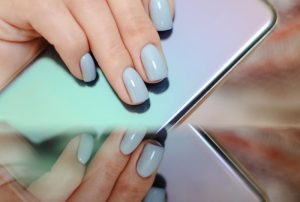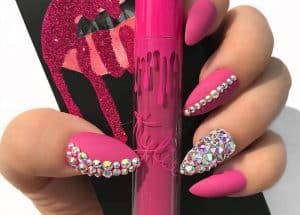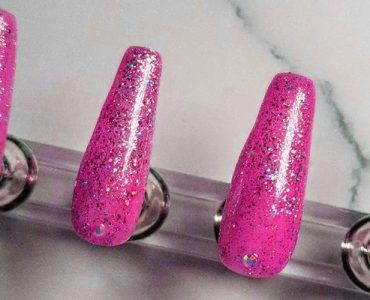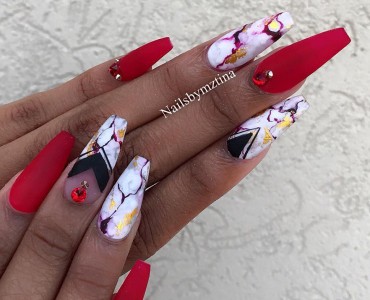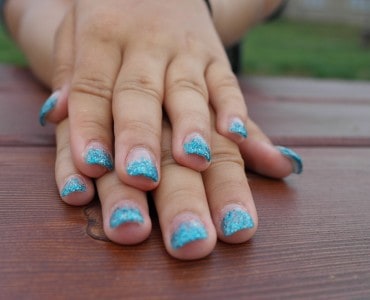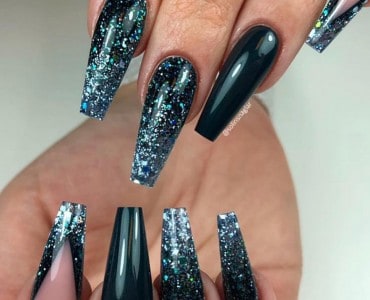When it comes to beauty and self-expression, acrylic nails have become a popular choice for many. These trendy nail enhancements offer a canvas for creativity and can give you that polished look you desire. However, amidst the fascination with acrylic nails, questions often arise about how they interact with our natural nails and skin.
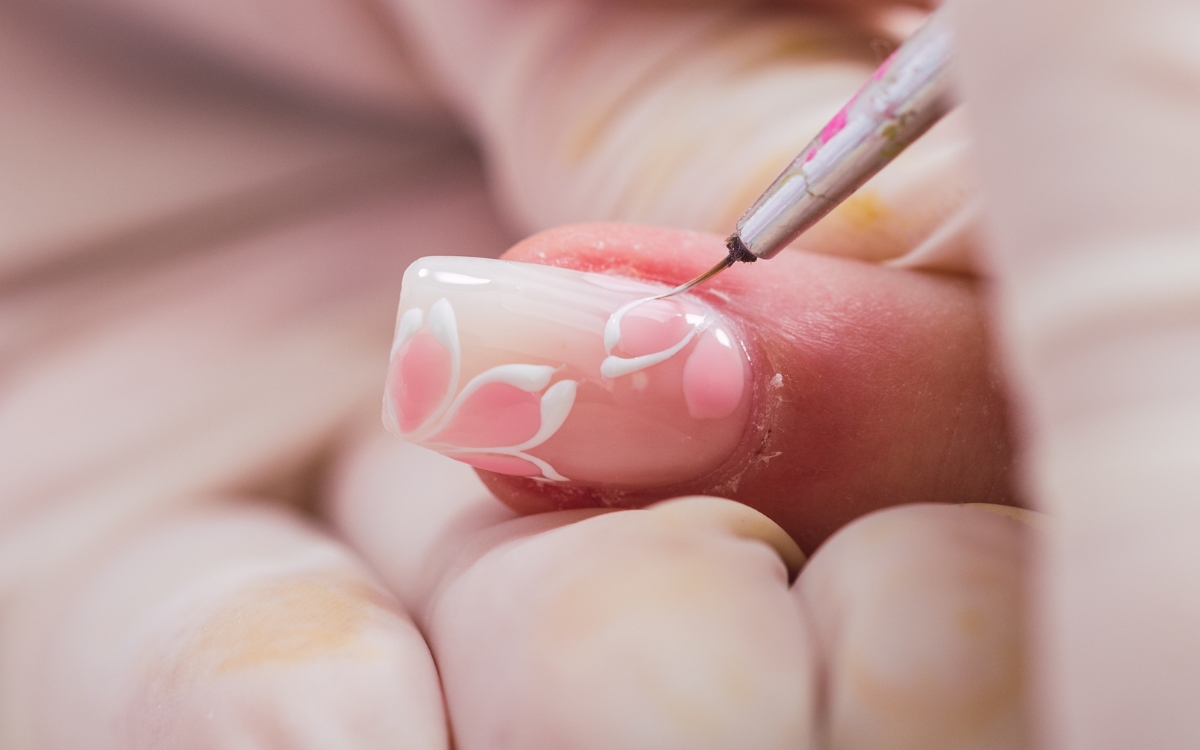
One common misconception is whether acrylic nails go under the skin. In this comprehensive blog post, we’ll delve into the world of acrylic nails, debunk myths, and provide you with all the information you need to understand their relationship with your skin and nail bed.
Do Acrylic Nails Go Under the Skin?
One of the most common misconceptions about acrylic nails is whether they go under the skin. To clarify this issue, it’s essential to understand the intricate relationship between acrylic nails and the skin surrounding them.
The Role of the Nail Bed
At the heart of this matter lies the nail bed, a critical part of your natural nail. The nail bed is the area beneath your nail plate, and it plays a crucial role in the growth and health of your nails. However, it’s important to note that acrylic nails do not penetrate or extend under the skin.
The acrylic material is applied to the surface of your natural nail, not underneath it. The acrylic mixture is carefully shaped and sculpted to give the appearance of a natural nail extension. This means that acrylic nails sit on top of your natural nail and do not intrude into the skin below.
Where Acrylic Nails Stop
To put it simply, acrylic nails stop at the edge of your natural nail. They are designed to enhance the appearance of your nails by adding length, strength, and sometimes decorative elements. Acrylic nails adhere to the natural nail’s surface, and they do not extend beyond it or beneath the skin. This is a common misconception, as some individuals may mistakenly believe that the acrylic material extends under the skin.
Read This Next:
Common Misconceptions
There are a couple of common misconceptions that contribute to the idea that acrylic nails go under the skin.
Sensation Under the Nail
Some people may experience a sensation under their acrylic nails, which they interpret as the acrylic material reaching the skin. In reality, this sensation is often caused by a lack of proper application or an improperly shaped nail tip. When acrylic nails are applied correctly, they should not cause discomfort or touch the skin.
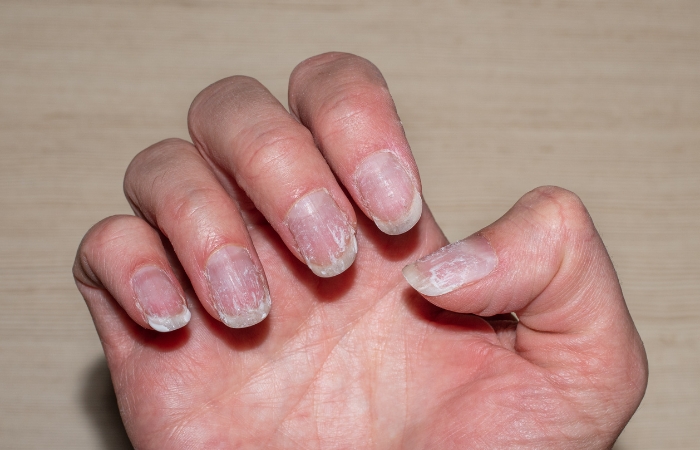
Allergies and Skin Reactions
Allergic reactions or skin irritations sometimes occur with acrylic nails. However, this does not mean that the acrylic material has penetrated the skin. Allergic reactions are typically the result of contact dermatitis, which happens when the skin comes into contact with allergenic substances present in the acrylic products or adhesives used in the application process. These reactions affect the skin’s surface and do not involve the acrylic material going under the skin.
In conclusion, acrylic nails do not go under the skin. They are applied to the surface of your natural nails and are meant to enhance their appearance. Understanding the relationship between acrylic nails and the skin can help dispel common misconceptions and promote a better understanding of nail care and maintenance. It’s essential to consult with a qualified nail technician if you have any concerns or questions about your acrylic nails and their interaction with your skin.
Understanding the Risks Associated with Acrylic Nails
While acrylic nails can provide a beautiful and durable manicure, it’s important to be aware of the potential risks and issues that can arise with their use. Here, we will explore some of the key concerns associated with acrylic nails.
Read This Next:
Allergic Reactions to Acrylic
One of the primary risks of acrylic nails is the possibility of allergic reactions. Some individuals may develop allergies to the components of acrylic nail products, such as the acrylic powder, liquid monomer, or adhesives. Allergic reactions can manifest as redness, itching, swelling, or discomfort around the nail area. It’s crucial to pay attention to any unusual reactions and seek professional advice if you suspect an allergy. In some cases, switching to hypoallergenic products may be necessary.
Infection Risks
Acrylic nails can create a potential breeding ground for bacteria or fungi if not properly cared for. The small gap between the acrylic material and the natural nail can trap moisture and debris, creating an environment conducive to infection. To minimize infection risks, it’s essential to maintain good hygiene practices, keep the nails clean and dry, and avoid activities that may damage or lift the acrylic.
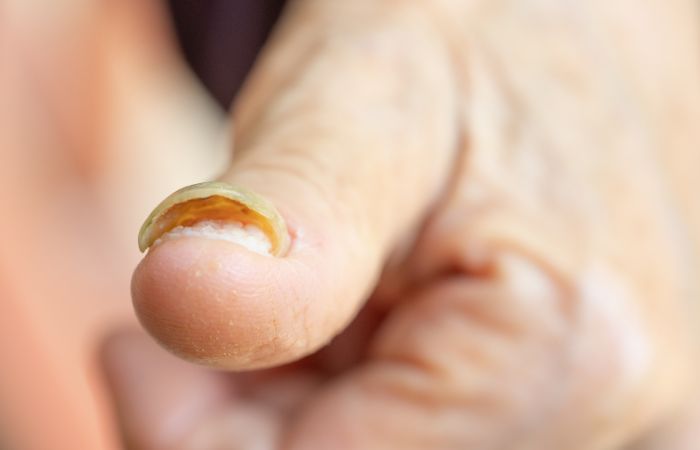
Nail Damage and Health Concerns
Acrylic nails can have both short-term and long-term effects on the health of your natural nails. Some potential issues include:
Thin and Weak Natural Nails
Long-term use of acrylic nails can sometimes result in natural nail thinning and weakness. This is more likely to occur if the acrylic nails are frequently applied and removed without giving the natural nails time to recover. Proper care, regular breaks between applications, and nail strengthening treatments can help mitigate this issue.
Lifting and Fungal Infections
Improperly applied acrylic nails can lead to lifting, where the acrylic material separates from the natural nail. This creates a gap where moisture and bacteria can enter, potentially causing fungal or bacterial infections. Vigilance in maintaining the integrity of the acrylic nails and seeking professional repairs when needed can help prevent such problems.
Caring for Acrylic Nails
To mitigate these risks and potential issues, it’s essential to follow proper care and maintenance practices for your acrylic nails. This includes:
Hygiene and Cleaning Tips
Regularly clean and dry your acrylic nails, paying attention to the area where the acrylic meets your natural nail. Avoid submerging your hands in water for extended periods, as moisture can weaken the adhesive. Proper drying and cleaning can reduce the risk of infection and lifting.
Avoiding Common Mistakes
Avoid picking, peeling, or forcefully removing acrylic nails. Doing so can damage the natural nails and increase the risk of infection. If you need to remove acrylic nails, it’s best to consult a professional nail technician who can do so safely and without causing harm to your natural nails.
When to Seek Professional Help
If you notice any signs of infection, allergic reactions, or significant damage to your acrylic nails or natural nails, it’s crucial to seek professional help promptly. A qualified nail technician can assess the situation and provide appropriate guidance or treatment.
Conclusion
Acrylic nails can be a fabulous way to express your personal style and enhance the appearance of your hands. However, the idea that acrylic nails go under the skin is a misunderstanding of how they work. In reality, acrylic nails are applied to the surface of your natural nails, and while they don’t extend beneath the skin, they can have a significant impact on your overall nail health.
It’s crucial to approach acrylic nails with knowledge and care, understanding the materials used, the application process, and the potential risks involved. By doing so, you can enjoy the beauty and creativity that acrylic nails offer while ensuring the health and well-being of your natural nails.


